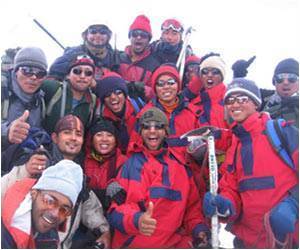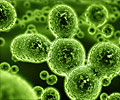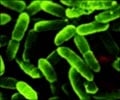Variance in gut microbiome seen in Himalayan populations was linked to their dietary lifestyle based on whether and how long ago it had departed from a hunter-gatherer lifestyle.

‘Human microbiomes have changed gradually, ever since human lifestyles changed. This can help scientists to examine direct environmental influences on gut health’





The study found that the composition of the gut microorganisms, or gut microbiome, of each population differed based on whether and how long ago it had departed from a hunter-gatherer lifestyle."This study indicates that human microbiomes may have changed gradually as human lifestyle changed, and those changes can happen within a human's lifetime," said Aashish Jha, PhD, a postdoctoral scholar at Stanford and lead author of the study.
The findings were published in PLOS Biology.
Past research has identified stark differences between the gut microbiomes of indigenous populations in Africa and South America and those of industrialized Western populations in Europe and the United States. However, this study is the first to show a change in gut microbiome compositions between closely related populations living within the same geographic area.
An evolving gut
Advertisement
For most of human history, our guts were exposed only to the wild foods available in our environment. Beginning some 1.8 million years ago, during the time of Homo erectus, humans were a nomadic, hunter-gatherer species whose diet consisted of fish and meat, along with seasonal seeds, nuts, roots, vegetables and berries. It wasn't until around 10,000 years ago that we transitioned to farming, radically altering our diets, cooking techniques and way of life.
Advertisement
An analysis of the samples' contents revealed four distinct types of gut microbiome. Even more exciting, these distinctions paralleled the populations' transition from hunter-gatherers to farmers.
The researchers found that subdivisions of bacteria, including Ruminobacter and Treponema, which are abundant in foraging groups like the Chepang, decrease as populations depart from the hunter-gatherer lifestyle. In fully industrialized populations, such as those in North America, these bacteria are rare or completely absent. Conversely, strains of other bacterial phyla such as Actinobacteria and Verrucomicrobia are rare or nonexistent in hunter-gatherers but appear as farming and industrialization take hold.
With the Raute and the Raji having transitioned to farming within the past 30 to 40 years, these results also suggest that pronounced changes in human gut microbiomes can occur within decades of a population's departure from a hunter-gatherer lifestyle.
A 2017 study in Science led by Justin Sonnenburg, PhD, associate professor of microbiology and immunology at Stanford, also showed significant gut microbiome changes in a society of hunter-gatherers called the Hadza. Specifically, the researchers found that the Hadza's gut bacteria was linked to their seasonally varying diet. Together with the current study, these findings "really speak to the power of diet in driving change to the microbiota," said Sonnenburg, senior author of the new paper.
Our microbial identity
With the gut microbiome so easily influenced, Sonnenburg wonders what this means for our definition of human biology. "We have always thought of humans as human DNA and the collection of humans cells that we walk around with," he said. "But now we know that we have this microbial identity, and that microbial portion of our biology is malleable. It can change over really short time periods."
The investigators are still working to uncover which dietary factors and other factors contribute to this transformation. So far, they have strong evidence suggesting a correlation between the villages' drinking water sources and differences in gut bacteria. This information can be valuable for future studies that aim to examine direct environmental influences on gut health.
The next step is to develop a more detailed survey that will pinpoint particular dietary components, in each of the four Himalayan populations, that are associated with changes in the gut microbiome.
Jha feels a sense of urgency to conducting this research. "As the world is urbanizing rapidly, our microbiomes are also changing rapidly," he said. "So, if we don't study the traditional societies today, 20 years down the road we may be too late."
Source-Eurekalert














